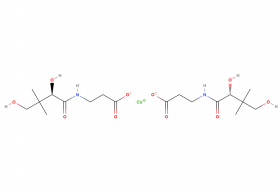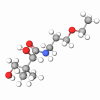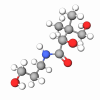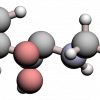It's Calcium salt of Pantothenic acid or Vitamin B5. Calcium pantothenate is used in many formulations, as it is more stable and products have a longer shelf-life in comparison to sodium salt or pure pantothenic acid. It is a white powder, odorless, sweetish taste with a slightly bitter aftertaste.
It is used in the food industry as a vitamin additive in powder-type preparations, vitamin fortification of beverages, breakfast cereals, chocolate drinks, and nut/chocolate creams. 1 mg of D-calcium pantothenate in dry matter is equivalent to 0.92 mg of pantothenic acid.
Calcium pantothenate has a positive effect on the migration and proliferation of skin fibroblasts. It stimulates fibroblast activity, suppresses free radicals, and enhances collagen and elastin production. A vital ingredient that heals, firms, and renews the skin.
It's absolutely necessary for those who need scar treatment, have skin transplantation, or burn injuries. Calcium pantothenate is also effective in the case of various dermatoses. It stimulates epithelization, granulation, and dermal cell migration leaving the most noticeable effects on healing and recovery processes.For hair care
Calcium pantothenate is the water-soluble and stable variant of free vitamin B5. This vitamin is deeply involved in many metabolic processes such as biochemical syntheses and energy transport mechanisms. It maintains the moisture level of the hair, stimulates cell growth and tissue regeneration, stops inflammation, and helps to recover tissue damage. Calcium Pantothenate has been shown to stimulate hair growth.
Stability
Relatively stable to oxygen and light, and typically sensitive to moisture by hygroscopicity and heat, spray-dried particles of Calcium pantothenate showed comparingly improved stability in a test under severe conditions (50°C/75% RH), stable in neutral, less stable in acidic and alkaline aqueous solutions by hydrolytic cleavage (for which dexpanthenol is the better choice as an alternative derivative of pantothenic acid), exposure to heat exceeding 70°-75°C may cause racemization.
Thanks to the spray-drying technique Calcium pantothenate gets essentially non-hygroscopic, non-dusty, and non-electrostatic properties expressed by free material flow in the process, storing, and transportation systems. An optimal distribution in premixes and food is safeguarded, as well as recovery rate in multivitamin premixes and mineral premixes near 100%, preparing mixing (f.i. after weighing) Calcium pantothenate should not have direct contact with acids (nicotinic- ascorbic acid).
Solubility
Freely soluble in water (about 4 g in 10.0 ml), soluble in glycerol, slightly soluble in alcohol and acetone, and practically insoluble in chloroform and ether.
Role
D-calcium pantothenate is the most important derivative of pantothenic acid. The vitamin itself appears as a yellow, very hygroscopic oil, which is very unstable. This calcium salt of pantothenic acid is the main commercial form in the market. The name was derived from the Greek word “pantos” meaning “found everywhere” in nature. In modern nutrition designed for high performance pantothenic acid is an essential ingredient for vitamin fortification.Biological activity
Pantothenic acid is optically active and only the dextrorotatory (D) form has vitamin activity. It is a constituent of two important coenzymes, coenzyme A and acyl carrier protein (ACP). It links carbohydrate, fat, and amino acid metabolism and forms the common pathway for these nutrients to enter the citric acid cycle.
General functions
The most important function of the coenzyme A is to act as a carrier mechanism for carboxylic acids. Such acids when bound to the coenzyme A have a high potential for transfer to other groups. Despite its central role in metabolism, pantothenic acid is indispensable for the normal functions of the skin and the mucosae, for pigmentation of the hair, and for resistance to infections.
Fat metabolism
The coenzyme A has an essential function in lipid metabolism. Fatty acids are activated by the formation of the coenzyme derivative, and degradation by the removal of acetate fragments in beta-oxidation also uses another molecule of coenzyme A.Deficiency symptoms
From observations on pantothenic-acid-deficient animals and studies in human volunteers, deficiency of the vitamin is shown in the following signs and symptoms:
- reduced growth and decreased feed conversion efficiency
- lesions of skin and appendages
- disorders of the nervous system
- gastrointestinal disturbances
- inhibition of antibody formation and thus decreased resistance to infections
- impairment of adrenal function.



